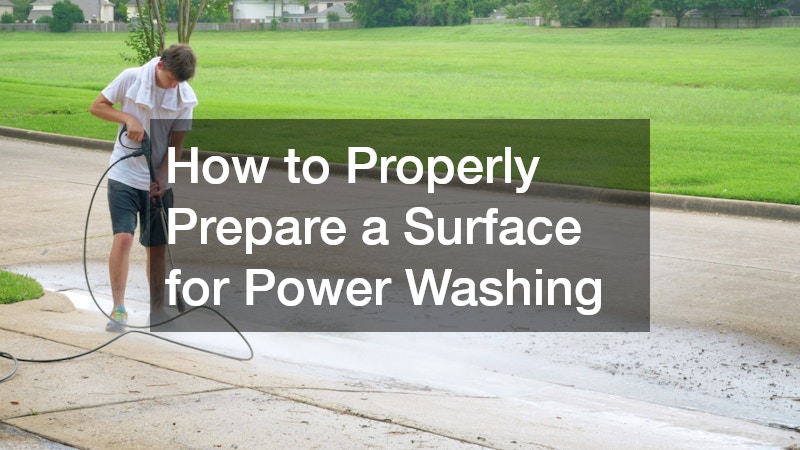In this article, we will explore the essential steps to properly prepare a surface for power washing. Proper preparation is crucial to achieving the best results while safeguarding the surface and surrounding areas from potential damage. Whether you’re a DIY enthusiast or a professional, this guide will cover everything you need to know.
What Types of Surfaces Can Be Power Washed?
Identifying the surface material is the first step in preparing for power washing. Different materials such as wood, concrete, and vinyl have unique properties and thus require specific power washing techniques.
For instance, wood is more porous than concrete and can be damaged by excessive pressure, necessitating a gentler approach.
Concrete surfaces, on the other hand, can withstand higher pressure levels, but may require particular cleaning agents to remove oil or rust stains effectively. Understanding these material differences is essential to avoid damaging the surface and to achieve optimal cleaning results. By assessing the surface type, you can adjust the power washer settings accordingly, ensuring effective and safe cleaning.
Moreover, knowing the surface material helps in selecting the right nozzle and distance. Using the wrong nozzle can lead to ineffective cleaning or even surface damage. Proper knowledge of the surface material ensures you can tailor the power washing process to suit the unique characteristics of each surface type.
Before power washing, evaluating the current condition of the surface is vital. This assessment helps in identifying areas that may need repairs or extra attention. For example, if a wooden deck has splinters or loose boards, these should be fixed before power washing to prevent further damage.
Similarly, look for cracks or chips in concrete surfaces, as high-pressure water can worsen these defects. Assessing the surface condition allows you to take necessary pre-washing steps, such as minor repairs or applying sealants, ensuring a smooth and safe cleaning process. This proactive approach not only safeguards the surface but also enhances the effectiveness of the powerwashing.
Understanding the age and previous maintenance of the surface also plays a crucial role. An older surface might be more susceptible to damage and would benefit from a less aggressive cleaning approach. By taking the time to assess surface condition, you create a foundation for a successful power washing project.
How Do You Protect the Surrounding Areas and Plants?
Protecting the surrounding areas, including plants and furniture, is essential to prevent water and chemical damage. Tarps and plastic sheets are effective tools for covering delicate plants and outdoor furniture during power washing. Secure these covers thoroughly to ensure they do not fly off during the process.
Additionally, consider relocating potted plants and movable furniture to a safe distance away from the power washing site. This proactive step saves time in cleaning up and avoids unnecessary damage to your possessions. It’s integral to remind yourself that prevention is better than a cure, particularly when it comes to safeguarding outdoor items from potential harm.
To further protect plants, consider using a gentle spray of water on them before and after power washing. This helps to wash away any residual cleaning agents or dirt that might settle on the foliage. By taking these preventive measures, you ensure that your landscape remains beautiful and undamaged.
What Safety Precautions Should Be Taken?
Utilizing personal protective equipment (PPE) is vital during power washing to ensure personal safety. Essential PPE includes goggles to protect your eyes against debris, gloves for hand protection, and non-slip footwear to prevent falls on wet surfaces. Depending on the cleaning agents used, a respirator may also be necessary to safeguard against inhaling potentially harmful fumes.
Wearing appropriate clothing, such as long sleeves and pants, can add an extra layer of protection against accidental contact with harsh chemicals. The right attire can minimize skin exposure, reducing the risk of irritation and injury. Taking PPE seriously ensures that you can complete your project safely and effectively.
Before starting, check that all PPE is in good condition and fits properly. Ill-fitting equipment may lead to discomfort or inefficiency, compromising safety. By prioritizing personal protection, you create a safer environment and can focus on achieving the best power washing results.
Proper preparation is the key to a successful power washing project. By understanding the surface material, protecting surrounding areas, and observing safety precautions, you can achieve professional results while maintaining the integrity of your surfaces.






